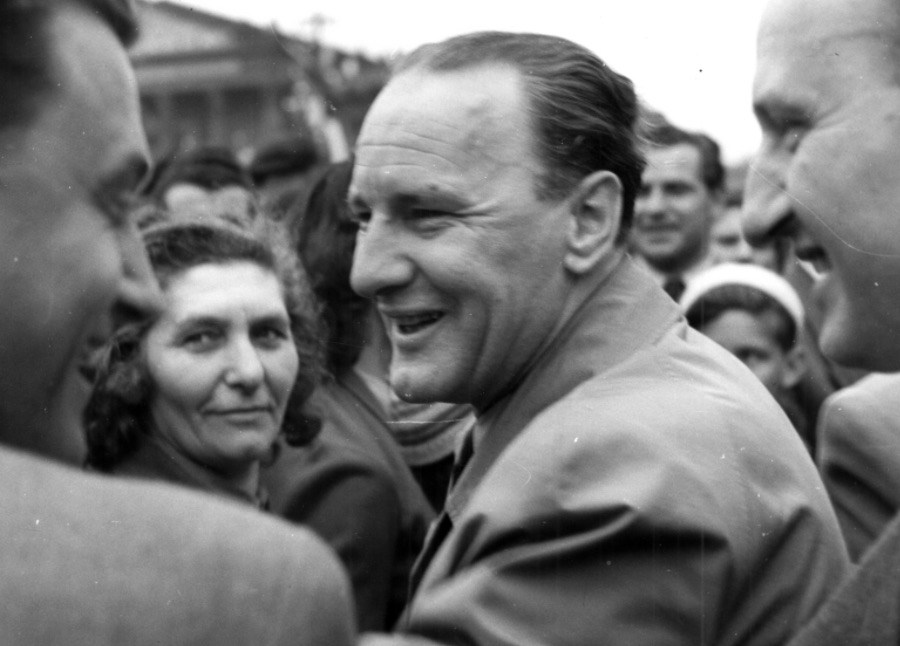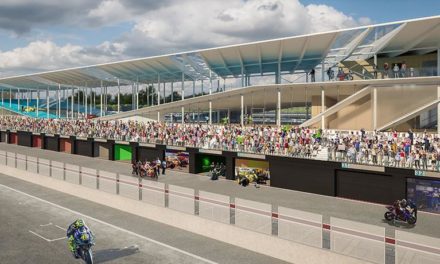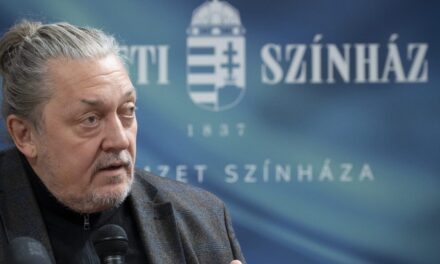The historian Zsuzsanna Borvendég's series was originally published on the PestiSrácok website, but there are certainly those who missed it. But those who haven't read all the parts should also read it again. Knowing the whole picture, can we understand how we got here?
In November 1956, a bloodthirsty and insane showdown began. The Kádár propaganda talked about the rampage of "fascist elements" who were against the order of "democratic socialism" and "people's democracy". However, the remnants of the real order were finally liquidated on March 19, 1944; the exlex status was fixed for decades after 1945 by the Soviet occupation and the communist takeover. The essence of the system of lies is that Kádár built his power and economy by relying on Nazi-armed villains against the heroes of '56, who were accused of extreme right-wing bias. Caution, the following lines may contain elements harmful to human well-being (and blood pressure), we only recommend them to our readers with strong nerves!
Last time we left off, Emil Hoffmann , the anti-hero turned Nazi intelligence officer turned businessman and journalist, visited Hungary in September 1956. We know that the National Association of Hungarian Journalists (MÚOSZ) sent him the letter of invitation , and the trip was financed by the Ministry of Foreign Affairs, but for what purpose?
The interest expressed by Hungarian politics in Hoffmann was related to the fact that the Hungarian diplomatic mission in Berlin built increasingly close personal links with some West German journalists from 1955. This opening was a spectacular consequence of the softening of world politics after Stalin: on March 18, 1955, the state of war between Hungary and the Federal Republic of Germany ceased, thereby opening up the possibility for institutionalized dialogue to begin.
Adenauer government in 1955 – threatened the severance of diplomatic relations with any country that recognized the GDR, so rapprochement was achieved through informal channels: representatives of Hungarian diplomacy with West German journalists they began to cooperate and were used as intermediaries.
Arrow sympathizer turned communist intelligence officer
In exchange for organizing meetings between representatives of West German political parties and Hungarian foreign affairs officials, the employees of the various newspapers were able to attend the meetings and report on them. Winning the sympathy of the Western press had already begun at that time.

Emil Hoffmann (right) and his Hungarian partner were photographed by state security. (photo: ÁBTL)
From 1955, Hoffmann kept in constant contact with the people of the Hungarian embassy in Berlin, especially Sándor Kurtán , the local head of Hungarian intelligence. Kurtán himself sympathized with extreme right-wing ideas during the war, because before 1945 he was a close friend of the head of the Arrow Cross Party in Derecske, he often visited the party's local headquarters and took part in the work there. In the fall of 1945, during a house search, they found "fascist" press products in his possession, for which he was prosecuted , but since they could not prove his party membership, the investigation was terminated with the following explanation: "He belongs to those village youths who came into contact with the spiritual leaders of the countryside, but did not out of political convictions and in this regard, but because there were no other intellectuals who would have dealt with the intellectual youth of simple origin at all, and thus these young people were connected to the leaders of this harmful movement against their will."
In the course of 1945/46, people who were officials of the previous government administration without having committed any kind of war or anti-people crime were arrested, sentenced and disabled. The rescuers, the members of the national resistance against the Germans, were dragged away, but the "little arrows" were forgiven. The ruthlessly ice-cold logic of power is clear: those who dared to take up arms against the Nazis will also do so against the Communists. The cloak-and-daggers, who unprincipledly rubbed shoulders with the current power and served it without hesitation, were also a perfect base for the communists.
The German socdems came in handy
Kurtán was therefore no stranger to cooperation with Hoffmann and the political force he represented, so he was happy to mediate between the ex-Nazi journalist and his government. Since Chancellor Adenauer and the Christian Democrats behind him abstained from negotiations with the countries of the Soviet bloc, it was necessary to look for another political factor, which is how the West German Free Democratic Party, the FDP, came into the picture.
The FDP was founded in December 1948 by the liberal parties of Trizonia - that is, the West German occupation zones - with many former National Socialist politicians in its ranks. According to Hoffmann, there were large capital groups behind them, who consciously prepared for the collapse of the socialist bloc - or if one of the satellite states managed to escape from the Soviet sphere of interest - their economic influence in the region would be unquestionable and they would start with an irreplaceable advantage over other interest groups .
Already in 1957, Hoffmann formulated that in Hungary "changes have taken place within the industry that preclude the possibility of restoring property rights, that is, the pre-1945 owners getting back their former factories, banks, etc. The same applies to agriculture. Therefore, it is not the goal or interest of this German capital group to restore the economic system in the country before 1945 in all respects."
Hoffmann "assumed, however, that the state would later sell and lease certain companies and, in this way, Hungary would gradually return to the capitalist economic system. That is why this capitalist group, of which Hoffmann is the agent, sees a great perspective in building economic relations between the FRG and the people's democracies, as well as in being ahead of other Western capitalist groups in this field," the intelligence agency concluded the discussion with the journalist .
Reading these lines, the alarm bell starts to blare with enormous volume in one's head. Already in 1957, West German (former Nazi, then pro-communist) circles of big capitalists were speculating that in the event of economic liberalization, they would scrape the chestnuts? Did he reassure them that the former owners no longer had a chance to recover their stolen property?
Socialism: from capitalism to capitalism
How could it have been, since the majority of them were liquidated, forced to emigrate, deprived of their rights and human dignity. And for some Western capital circles, this was welcome news! Of course, the comment that Hungary will slowly return to the capitalist economic system can only be answered with a forced grimace.
According to a contemporaneous bon mot, what is socialism? The most difficult part of the road from capitalism to capitalism. Thanks, we've been through it.
between the representatives of the FDP and the Hungarian diplomacy Emil Hoffmann , who assumed this role as a staff member of the newspaper Industriekurier, which was one of the leading economic organs of West German capital. With the active participation of the ambassador in Berlin, Emánuel Safrankó , and his colleague, Sándor Kurtán
One of the members of the two-person delegation was Kurt Haller (the liaison between the Nazis and the Arrows in Budapest during the German occupation), and Willi Max Rademacher , also a politician and businessman with a Nazi background, was one of the members of the delegation. As the owner of one of the largest shipping companies in West Germany, Rademacher had a personal interest in the expansion of Eastern trade, so as a politician he actively lobbied for the improvement of the position of Hungarian economic partners.
They found Kádár's weak point
After the visit in October 1956, a short intermezzo followed: it was difficult for the Western public to communicate the dialogue with Kádár, who gained power on the back of Soviet tanks. Moreover, Hoffmann and his circle waited; they wanted to see which groups could eventually stabilize their power, with whom it was worth doing business, and of course what kind of barter could be struck with them. Hoffmann assessed his possibilities quickly and with perfect insight, felt Kádár's weakest point: his lack of legitimacy.

János Kádár, the smiling avenger (photo: Fortepan)
The Achilles heel of all power is the degree of legitimacy and social acceptance. Kádár came to the head of the country illegally, since the intervention of a foreign armed force elevated him to the prime minister's chair , and moreover to a position that was held.
On October 23, the Hungarian people demanded Imré Nagy The "damage" caused by the illegal seizure of power could only be removed by gaining the support of society, but the nation did not give in easily. Kádár was left with no other choice but to launch a propaganda machine in parallel with the execution of the cruel reprisal , which prepared the subsequent consolidation for him.
He used everyone without inhibition to stabilize his own position; even the fact that while fascistizing the Hungarian heroes fighting as patriots, he also relied on Nazi helpers abroad and Arrow helpers at home did not cause him any cognitive dissonance. The opportunistic Hoffmann found an excellent partner in the new Hungarian government, and in the summer of 1957 he began building the later narrative of the Kádár goulash communism.
Author: historian Zsuzsanna Borvendég
(Header image: Fortepan)












